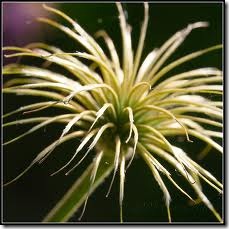-
 Clematis (Clematis spp.) are deciduous or evergreen vines with a range of flower colors. The vines grow in different climatic zones but thrive best in areas with cold winters. Clematis fireworks grow to a mature height of 8 to 12 feet and blooms with pink and mauve flowers. The vine is low maintenance and has a moderate water requirement, growing best in a well drained, fertile soil. Clematis vines, including clematis fireworks, are susceptible to a number of pest related or pathogenic problems.
Clematis (Clematis spp.) are deciduous or evergreen vines with a range of flower colors. The vines grow in different climatic zones but thrive best in areas with cold winters. Clematis fireworks grow to a mature height of 8 to 12 feet and blooms with pink and mauve flowers. The vine is low maintenance and has a moderate water requirement, growing best in a well drained, fertile soil. Clematis vines, including clematis fireworks, are susceptible to a number of pest related or pathogenic problems.
Foliage Feeding Caterpillars
-
The University of California Extension lists foliage-feeding caterpillars as a potential pest of clematis. Caterpillars are the larva of butterflies or moths and feed on the leaves of infested plants, often creating a tent like nest with their silk webbing and feeding below it. The insects devour entire foliage with stems and lead to heavy defoliation. Severe infestation causes branch dieback and death of entire plant. Management includes pruning and disposing infected plant areas. Keep plant in good health with adequate watering and fertilizing. Chemical control options include the application of Bacillus thuringiensis.
Rust
-
Rust is listed among the potential problem in clematis by the University of California Extension. Rust is a fungal disease characterized by the appearance of dried red, yellow or orange shaded pustules or spores on infected plants particularly on the foliage undersides. As disease progresses the upper foliage surfaces turn brown and yellow accompanied by leaf drop. Certain rust fungi create galls or tissue swellings and cankers on infected plant bark. Left uncontrolled, rust can kill the entire plant. Management includes avoiding overhead watering and keeping plant area clear of fallen foliage and debris. Prune all infected plant areas on first indication of disease.
Rot Disease
-
Clematis vines are likely to get infected with the Phytophthora fungi that lead to foot, root, crown or collar rots in the plant, as cited by the University of California Extension. Early symptoms of the disease include wilting and discoloration of foliage with stunted overall growth of plant and premature leafdrop. Inspection reveals dark gray or brown discoloration under the bark red or black secretion. Infected plant may die entirely. Management includes improving drainage in poorly drained soils and avoiding planting in ground with previous history of phytophthora infection.

Deprecated: strpos(): Passing null to parameter #1 ($haystack) of type string is deprecated in /home/agriviek8Qv/agriviet.net/public_html/wp-includes/comment-template.php on line 2522